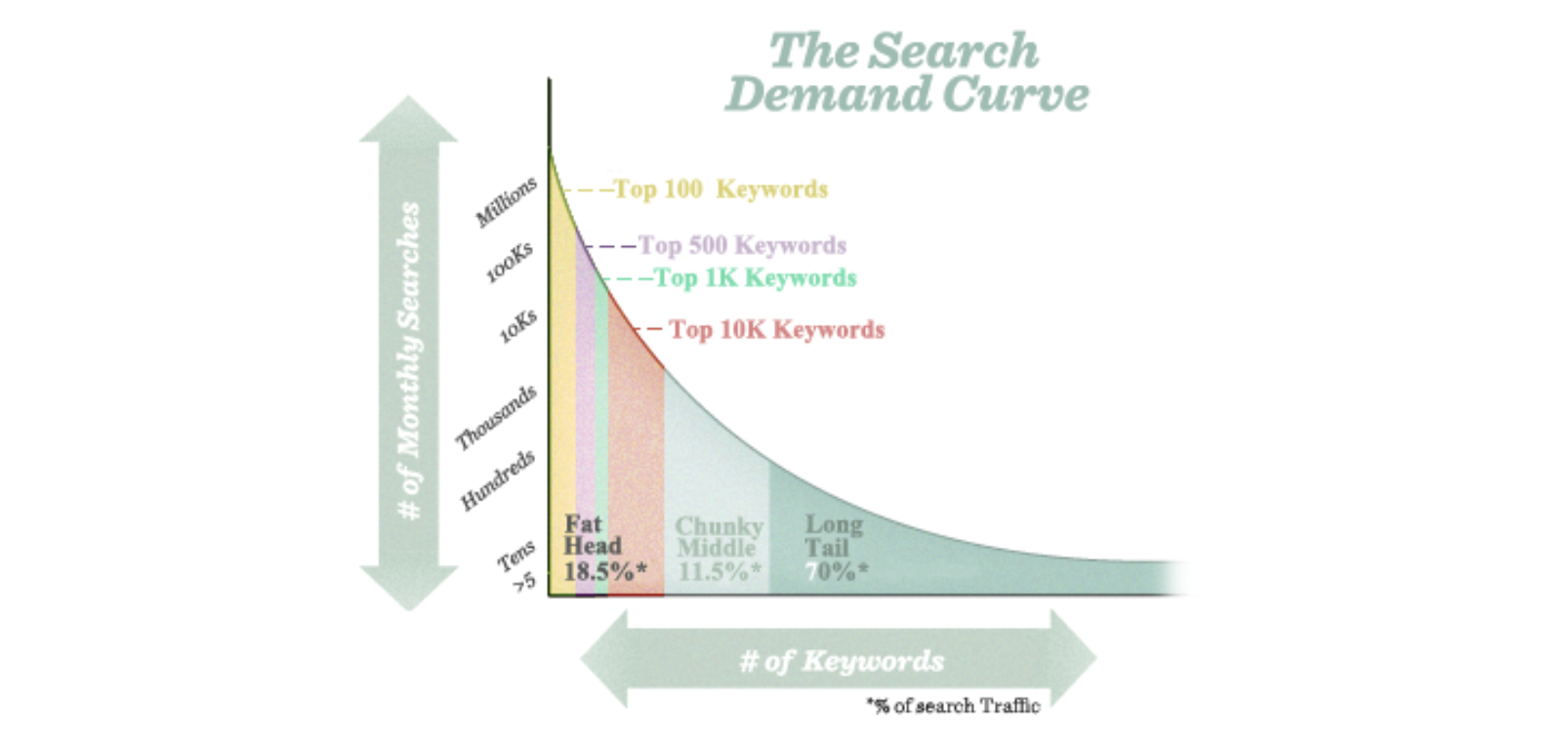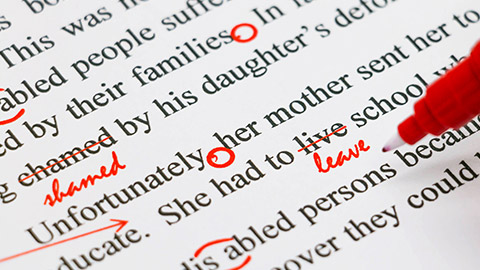In this section of the module, you will learn about the following:
1. Develop written content that aligns with organisational style guide, branding and marketing activity.
2. Produce accurate and detailed written content that aids customer browsing and purchasing.
3. Use text styling that provides a clear hierarchy of content.
4. Use copywriting techniques that encourage customer engagement.
5. Plan and use keywords for search engine optimisation.
6. Check for correct use of grammar and spelling and make any required amendments.
7. Seek feedback from relevant personnel and make any required amendments to written content.
We frequently think of voice and style as natural qualities, hard to describe, but you know it when you see it. This is why some individuals are hesitant to create a style guide for their company or organisation. Others are reluctant because they just don’t need one more task added to their to-do list.
But an organisational style guide can be a critical resource for marketing and branding your brand. It’s also precious when you’re growing, and you need to get new personnel and volunteers up to speed.
Style guides help organisations present themselves in the manner they want to be seen, and they help your personnel represent the organisation properly. To begin, learn the why behind style guides, outline your organisational style, and what to include in your guide.
Why do you need a style guide?
Consistency is the primary goal of a style guide. The point is to ensure everyone representing your company is on the same page. You’ll notice that big organisations are coherent in the way they present themselves. Consistency expresses a measure of professionalism and competence.
Additionally, using the same imagery and language in your advertising and communications is crucial to building and improving your brand. Remember, your product is your identity in the public’s mind. It’s what individuals think of when they think of your business. Every email, advertisement, appeal, and social media post contributes to how your company is understood. Establishing standards for communications is vital for maintaining your brand.
Finding your style
The first step to making an organisational style guide is explaining how you want to present the company to people. You can start by collecting any documents or communications that you feel genuinely symbolise your brand. These communications will help set guidelines and offer instances in your guide.
A style guide can be as easy or detailed as you like, but here are some of the most common and essential sections to include.
Voice
How does your organisation talk to the public? Are you serious? Lighthearted? Do you inclined to pop culture or stick to more conventional touchstones?
These are a few of the questions you can ask. You want to document the kind of personality you want to convey.
Terminology
Many organisations have preferred terms for their own approaches and initiatives. Your style guide can be the mandate on how your company about itself and its products.
Format
What font does your organisation use for most communications? What colors do you use?
This is where you can set more design-associated rules. It’s also an excellent concept to select a main literary style guide for blogs and impact stories. These external writing guides will resolve questions of punctuation and text formatting.
Style for specific communication
In many instances, small organisations will be able to use one set of regulations for most communications. As an organisation expands or increases its marketing content production, developing your style guide to include instances and advice for particular kinds of communications might make sense.
Some General Tips
- Aim for minimalism and clarity in all your communications.
- Accentuate to your employees that plagiarism is unacceptable. If necessary, give information on how to quote and attribute concepts correctly.
- In your style guide, it’s important to include links to resources like dictionaries and your chosen literary style guide.
Creating an organisational style guide can seem like a big undertaking, but keep in mind that you can begin small and add to it as you go. Your style guide is a staying document and can grow and adjust over time. Start by simply documenting the product and voice your company is seeking to put forth. From there, you can add desired terms, formatting guidelines, and more.
Explore
Have a think about:
- What is a style guide?
- Why do you need a style guide?

Content is as significant as the design and aesthetics of your website since it drives search engine results, improves traffic to your page, and determines your organisation as an industry leader. And nowaday's content marketplace, both quality and quantity regulate your ability to leverage content for business outcomes.
Though there is no secret formula for writing better-quality content, these are some tips that can help in improving the quality and quantity of your written content:
Write a head-turning headline
The headline defines whether audiences will read the rest of your work. If the headline doesn’t trigger interest, stir an emotion or make the reader want to understand more about the topic, you won’t accomplish the desired results with your content.
Create a hook that grabs their attention
You have three seconds to keep readers attached after the headline. The first sentence also performs a role in deciding whether they read the rest of your content. As an outcome, it must capture the reader’s attention and efficiently lead them into your first point.
Do your research
You must have a broad knowledge of the topic you are writing about, particularly in the B2B market. Include numbers, data, and metrics to verify credibility and support your claims.
Focus on a single purpose
You must recognise at least one key message you’d like to communicate before you create your content. Bear this in mind when writing and link your content back to the key point as much as feasible.
Write in a unique voice
The content you create and publish is the voice of your company, and it should be unique to your company’s personality. It’s vital to align the tone of your writing to your target audience, business objectives, and brand persona.
Optimise digital content
The best digital content frequently consists of short paragraphs, sentences, and bulleted lists. Digital content must also be optimised for search using SEO best practices and the newest SEO content strategies.
Edit your work
After you have crafted the first draft, go back and consider how you may polish the rough edges of your writing. In most instances, writing enhances as it goes through a round or two of edits—even when experienced content creators have written it.
Reflection
Have a think about what you have just read and reflect on the following questions.
- What is the importance of creating quality written content?
- Wha are the important tips that can help you improving the quality of your written content?

Efficiently organising content within a design so that it’s easy to comprehend and consume is one of a designer’s most valuable jobs. And since a lot of the content designers work with is text-based, generating an effective typographic hierarchy is one of the most vital things a designer can learn.
While testing and experimenting with creating an efficient hierarchy is the best way to learn the skill, there are several standards designers should learn first before setting out on their own. After all, it’s difficult to break the rules essentially without first knowing what they are.
What is Typographic Hierarchy?
Beginning designers occasionally underestimate the necessity of applying a hierarchy of typography. Yet look at this example:
Comparing these two cases, it’s immediately obvious why typographic hierarchy is so significant.
The same data is being conveyed on both sides, yet it’s difficult to tell that there is a header, subheader, and body text on the left. On the right, it’s immediately apparent that there is a hierarchy to the information being given. The typographic hierarchy shows the reader which data to focus on—which is most valuable and merely supporting the main points. Several things make up a typographic hierarchy on the web.
These include:
Size
Size is usually the first thing new designers turn to when attempting to create a typographic hierarchy. And for great reason: It’s instantly, easily identifiable by readers. Larger = more important, smaller = less important. But size can turn into a crutch when there are so many other choices to generate hierarchy.
Weight
Creating a typeface bolder or thinner is another simply recognisable way to make a hierarchy that’s easily distinguishable even by non-designers.
Colour
Color is frequently ignored as a way to create a hierarchy, but it’s an attractive option. Even using softer and darker shades of a given color can generate a more distinct hierarchy. Creating more contrast among types and their background can as well add to the typographic hierarchy.
Contrast
Beyond contrasting colors, the contrast between various type sizes, weights, and styles is also crucial to creating a typographic hierarchy. A difference of one or two points in type size will not produce sufficient contrast to make the hierarchy evident to most users. Instead, designers must easily use noticeable sizes, weights, and styles to easily contrast headers or body text.
Case
While capitalising body text is usually not a good point from a readability perspective, capital characters in headings or subheadings can help distinguish different headings or another type.
Poisition and Alignment
The placing of headings and subheadings, along with another kind that a designer needs to stand out, can affect where type falls within a hierarchy. The centering type, for example, tends to make it stand out. Setting type outside of the usual margins of a page can likewise make that type stand out within the hierarchy of a page.
Reflection
Have a think about what you have just read and reflect on the following questions.
- What is Typographic Hierarchy?
- What is the importance of using typographic hierarchy in your digital content?

The simple reason some individuals get more views on their content is not for the reason that they have more knowledge or experienced than you. It’s because they have accomplished more clarity in their messaging.
Individuals are more likely to choose to engage with you when you have clear communication – and can convey it in a few seconds or less. If your audience has to think too tough about what you’re telling, you’ve lost them before starting.
These copywriting strategies for growing customer engagement can easily use for your content once you learn how it works.
Start with a clear title
The content marketing approach is about cultivating a relationship between your ideal client and your business. Titles and headings do most of the intense lifting when engaging your viewer, so ensure your heading gives your audience a reason to stop scrolling and begin connecting.
Aim for clarity over cleverness
Even the world’s most talented writers get trapped writing headlines. But remember of the objective is not to write an imaginative headline that nobody will read since it’s hard to understand. The objective is to make it simple to understand. Clear messaging will do more to set you apart than being amusing or unconventional – so put the work into streamlining your concept into a clear message that lets the content talk for itself.
Write from your customers perspective
If you want to improve engagement, you really need to make certain your content is covering topics that add value to your clients. What are their questions? How can you help in making their life easier? Can you offer assistance that will save them time or money? If you’re not sure what you have to give to your customers, it’s time to do some more research.
Be consistent with your engagement
Even if you employ all these suggestions and nail some clear messaging on your next blog, there’s little point if you don’t follow it up. Effective content marketing strategies depend on building an ongoing relationship with your perfect customer over time.
Reflection
Have a think about what you have just read and reflect on the following questions.
- Why is it important to have a content marketing strategy?
- How can you increase engagement through clear messaging?
Keywords are ideas and topics that describe what your content is about. In terms of SEO, they are the words and phrases that seekers enter into search engines, also called "search queries." If you boil the whole thing on your page — all the pictures, video, copy, etc. — down to simple words and phrases, those are your main keywords.
Why are the keywords important?
Keywords are crucial because they are the cornerstone between what individuals are searching for and the content you deliver to fill that need. Your objective in ranking on search engines is to push organic traffic to your website from the pages of search engine results, and the keywords you select to target will determine what sort of traffic you get.
Keywords are as significantly about your audience as they are about your content since you might describe what you propose in a slightly different way than some persons ask for it. To create content that places well organically and sends visitors to your site, you need to understand the demands of those visitors — the expression they use and the kind of content they seek.
Kind of Keywords
Keywords can be extensive and far-reaching (these usually are called "head keywords"), or they can be a more particular combination of several terms — these are frequently called "long-tail keywords."

Singular Keywords
may appear to be your greatest goal as they frequently have a temptingly high search volume. Though, they usually have exceptionally tough competition.
Long-tail Keywords
typically have more clearly specified intent. You will also find that long-tail keywords have fewer competition, with room for a lesser site to break in and make their spot on the SERPs.
Using keywords on your site
Creating captivating content delivers real value for real people, not just throwing hints to robot friends at Google. There are some simple keyword usage rules you must follow to get started. Unique keywords must be employed on each page of your site in the spaces that bots and humans usually look to encourage them that you have what they're after. This contains both the title tag and the body of your content, which leads to a significant point: the pitfalls of clickbait. You may think you're enticing more clicks by presenting enticingly vague titles for your content, but by hiding what the page is about, you're choosing out of some of the power of keywords.
Reflection
Have a think about what you have just read and reflect on the following questions.
- What are keywords?
- Why are keywords important?

Word-processing programs normally have a spell-checker, but you must still carefully check for correct adjustments in your words. This is because automatic spell-checkers may not constantly understand the context of a word.
Misspelling a word may seem like a minor mistake, but it can indicate very poorly on a writer. It implies one of two things: either the writer does not have enough care about his work to edit it, or he does not know his subject matter well enough to spell words related to it correctly. Either way, spelling mistakes will make a reader less likely to trust a writer’s ability.
The best way to make sure that a paper has no spelling errors is to look for them during the editing stage of the writing process. Being acquainted with the most common mistakes will help you locate (and fix) them during the writing and proofreading phase.
Occasionally, a writer does not know how to spell the word she needs to use. This may be since the term is technical jargon or comes from a language other than her own. In some other cases, it may be a proper name that she has not faced before. Anytime you need to use a word but are uncertain of how to spell it, do not guess. Rather, check a dictionary or other reference work to get its proper spelling.
Common Spelling Errors
Phonetic Errors
Here are some familiar phonetic loopholes: o A word may sound like it could be spelled several ways.
- A word has silent letters that the writer may not remember to include.
- A word has double letters that the writer may not recall to include.
- The writer may use double letters when they are not necessary.
Homophones
“Bread” and “bred” sound similar, but they are spelled differently and mean different things. Two words with several meanings but the same pronunciation are homophones. If you’re unsure which homophone is the correct one to use, look both up in the dictionary to find out which meaning (and spelling) you want.
Typographical Errors
Some spelling mistakes are caused by the writer unintentionally typing the wrong thing. Usual typos include:
- Forgetting letters from a word (typing “brthday” instead of “birthday,” for instance)
- Adding additional letters (typing “birthdayy”)
- Rearranging two letters in a word (typing “brithday”)
- Spacing words inappropriately (such as “myb irthday” instead of “my birthday”)
Reflection
Have a think about what you have just read and reflect on the following questions.
- What is the importance of proofreading your written content?
- What are the commpn typographical errors when writing?
Seeking and giving feedback on written content is a tough job. Personnel must watch their tone, make sure the suggestions are specific and helpful, and explain precisely what it is that’s not correct and need improvement.
On the other hand, if the content writer fails to understand the organisational requirements and keeps making errors that can be prevented, take time to explain them instead of editing them yourself.
So, how can you give meaningful feedback that enhances content production and keeps both ends satisfied at the same time?
Give appropriate feedback when the content is created
There’s a disadvantage to delaying feedback: the odds of disregarding what you had planned for the content begin to stack up. You will find yourself twisting through old comments or email threads to modify what you agreed with the writer.
Be clear about who is going to give feedback
Editors and proofreaders are dedicated to giving feedback on content. Others might still be choosing who will provide feedback or review the content. Multiple personnel giving feedback can complicate and confuse the writer and may also undermine each other’s feedback.
Prepare a detailed content brief to prevent unnecessary edits
It would assist if you had a concise or outline that clearly emphasises the content required, the style to follow, and responds to other questions that a writer may have. Below are the specifics that need to be included:
- Target keyword(s)
- Headline choices
- Suggestions for content structure
- Internal links
- Competitive analysis
Reflection
Have a think about what you have just read and reflect on the following questions.
- How can you give meaningful feedback that enhances content production and keeps both ends satisfied at the same time?
- How can you explain what is lacking with the content when you give feedback?
